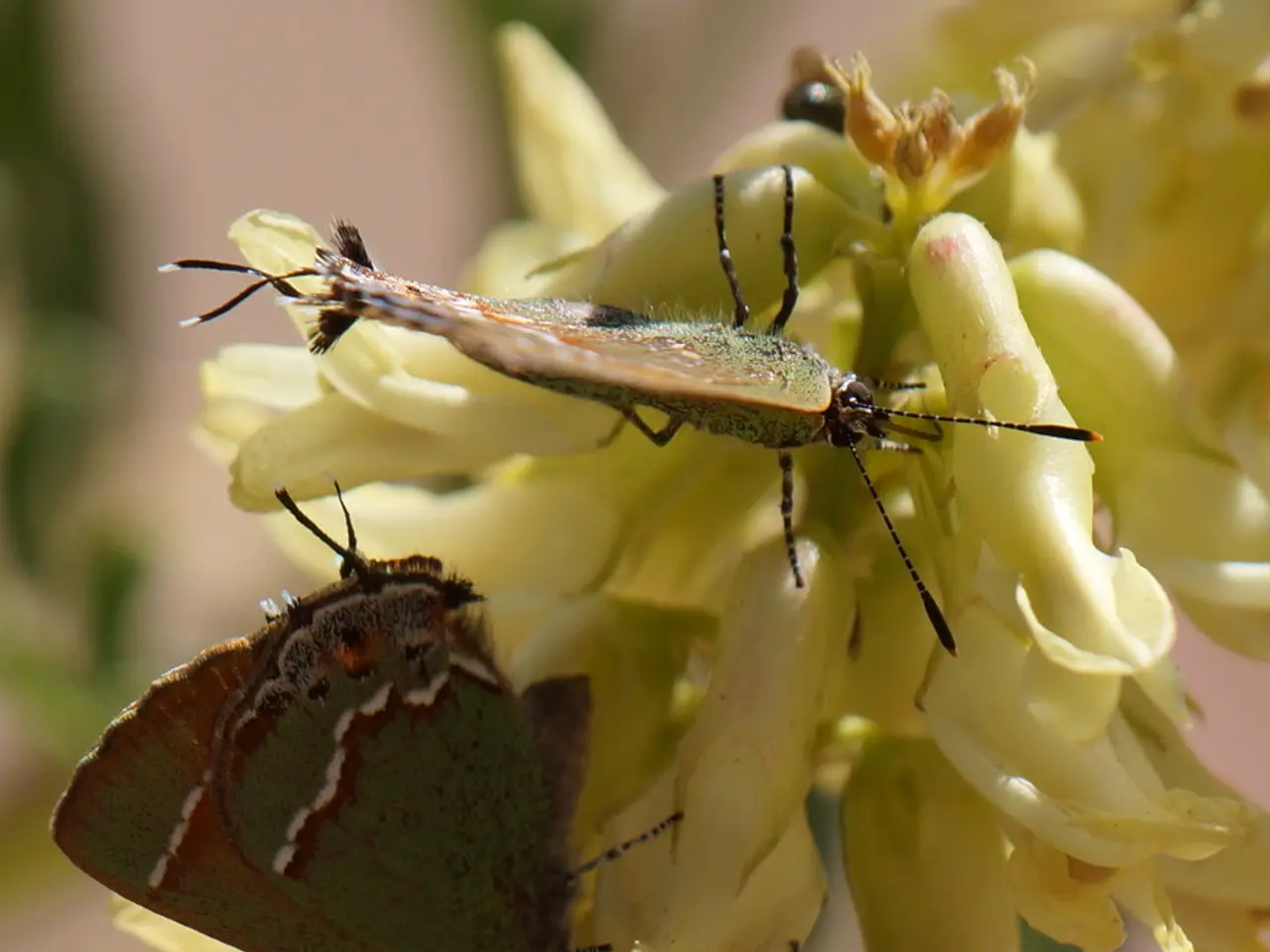18 Blooms to Entice Monarch Butterflies in Your Garden
In a bid to create a vibrant and vital oasis for pollinators, consider cultivating a diverse array of flowers that cater to the needs of monarch butterflies. By incorporating these 18 butterfly-friendly plants into your garden, you'll not only enjoy a stunning visual display but also contribute significantly to the conservation of monarch butterfly populations.
- Common Milkweed (Asclepias syriaca) – This essential host plant serves as a critical habitat for monarchs, providing a place for eggs to be laid and caterpillars to feed.
- Mexican Sunflower (Tithonia) – With its bright orange-red blooms, this nectar-rich plant is a favourite among monarchs, especially during mid-summer to autumn.
- Bee Balm (Monarda spp.) – These plants' tubular flowers, available in red or lilac, attract not only monarchs but also hummingbirds.
- Purple Coneflower (Echinacea purpurea) – This nectar source is highly attractive to butterflies, making it an ideal addition to your garden.
- Zinnias – Monarchs have a particular fondness for these flowers, making them a highly favoured nectar flower in your garden.
- Blue Mistflower (Conoclinium coelestinum) – Blooming best in late summer and autumn, this plant is a secret weapon for attracting monarchs during migration.
- Joe-Pye Weed (Eutrochium purpureum) – This nectar plant is a must-have during migration, offering sustenance to adult monarchs.
- Goldenrod (Solidago spp.) – Providing late-season nectar, this plant ensures that monarchs have a food source even as other plants start to wane.
- Anise Hyssop (Agastache foeniculum) – Fragrant and irresistible to butterflies, this nectar magnet is a welcome addition to any garden.
- Verbena – This spreading nectar plant is another excellent choice for attracting monarchs.
- Milkweed varieties – Beyond common milkweed, other milkweed varieties, such as swamp milkweed, are crucial for the larval stages of monarchs.
- Tithonia (Mexican Sunflower) – This plant's vibrant blooms are a strong attractant for monarchs.
- Butterfly Bush (sterile cultivars) – These cultivars, which do not spread invasively, are a great way to attract butterflies without contributing to invasive species.
- Joe-Pye Weed – A nectar plant that is essential for monarchs during migration.
- Purple Aster (Symphyotrichum spp.) – This late-blooming nectar source offers sustenance to monarchs as other flowers start to fade.
- Sunflower (Helianthus spp.) – With its large flower heads, this plant is a magnet for butterflies, offering them a much-needed food source.
- Lantana – Vibrant and nectar-rich, this plant is a welcome addition to any garden seeking to attract monarchs.
- Cosmos – Easy to grow and boasting nectar-rich flowers, cosmos is an ideal choice for those looking to create a monarch-friendly garden.
These plants, which provide both host foliage for monarch caterpillars (milkweeds) and a variety of nectar sources to sustain adult monarchs throughout the growing season and migration, make your garden a vital habitat for monarchs from egg to adult stage.
Sunflowers, with their late summer blooms, are a highlight in any backyard, offering nectar to monarchs and later providing seeds for birds. By planting these 18 flowers, you're not only creating a beautiful garden but also contributing to the conservation of monarch butterflies.
[1] Source: Monarch Watch, Pollinator Partnership, Xerces Society for Invertebrate Conservation [3] Source: National Wildlife Federation [5] Source: Lady Bird Johnson Wildflower Center
- Incorporating Common Milkweed into your home-and-garden will offer a critical habitat for monarch caterpillars and provide a vital food source for these pollinators.
- To attract monarchs, consider planting vibrant Mexican Sunflowers in your garden, as these provide a rich nectar source for adult butterflies.
- Bee Balm plants, with their tubular flowers, attract not only monarchs but also hummingbirds and contribute to a diverse pollinator garden.
- Purple Coneflower is highly attractive to butterflies, making it an ideal nectar source for your home-and-garden.
- Zinnias are favoured by monarchs and make for an excellent addition to your garden decor, offering a stunning visual display and a food source for pollinators.
- Blue Mistflower blooms best during late summer and autumn, attracting migrating monarchs to your garden.
- Joe-Pye Weed is essential during migration as it offers sustenance to adult monarchs and contributes to a thriving monarch lifestyle in your garden.
- Goldenrod provides late-season nectar, ensuring that monarchs have a food source even as other flowers start to wane.
- Anise Hyssop, aromatic and irresistible to butterflies, is a welcome addition to any garden as it serves as a nectar magnet for insect pollinators.
- Verbena, a spreading nectar plant, is another excellent choice for attracting monarchs and other pollinators to your home-and-garden.
- In addition to common milkweed, other milkweed varieties, such as swamp milkweed, are crucial for the larval stages of monarchs and contribute to a balanced pollinator ecosystem in your garden.
- Beyond the Mexican Sunflower, Tithonia also offers bright blooms that attract monarchs to your garden.
- Butterfly Bush (sterile cultivars) is a great way to create a garden that attracts butterflies without contributing to invasive species in the ecosystem.
- Joe-Pye Weed is not only a nectar source for monarchs, but it's also an essential part of any wildlife-friendly garden.
- Purple Aster, blooming late in the season, offers sustenance to monarchs as other plants start to fade and contributes to the beauty of your home-and-garden.
- Sunflowers (Helianthus spp.) are a bright and vibrant addition to your garden, offering nectar to monarchs and valuable seeds for songbirds later in the season.
- Lantana, with its nectar-rich flowers, is another attractive option for gardeners looking to create a thriving and diverse pollinator habitat.
- Cosmos is easy to grow and provides nectar-rich flowers that attract monarchs and countless other pollinator species, making it an ideal choice for gardeners committed to home-and-garden conservation efforts.





